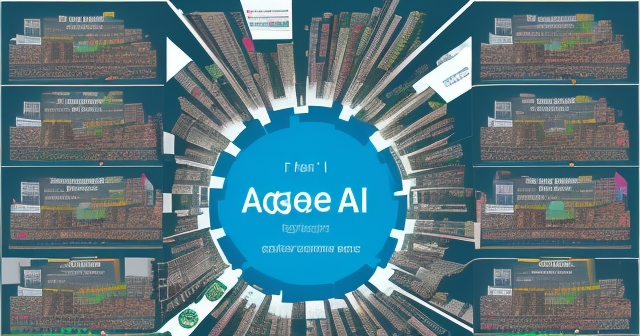The Multi-Faceted Rise of Aggregators: Shaping Investment, Payments, and Information Flow
Welcome! In the dynamic world of finance and technology, new paradigms constantly emerge, redefining how we access information, conduct business, and make investment decisions. Today, we want to explore a concept that has silently become fundamental across various sectors: the aggregator. You might already interact with aggregators daily without even realizing it, from checking your news feed to making an online purchase. But what exactly are aggregators, and how are they profoundly impacting areas like eCommerce, digital payments, and financial information management, all of which are crucial for anyone navigating the markets, whether you’re a seasoned trader or just starting your investment journey?
Think of an aggregator as a digital hub, a central point that collects, sorts, and presents information or facilitates transactions from numerous disparate sources. It’s like a curator for the digital age, saving you the time and effort of visiting countless individual websites or platforms. For traders and investors, understanding the different types of aggregators and their influence is no longer a matter of mere curiosity; it’s essential for gaining a comprehensive view of market trends, identifying opportunities, and managing risk in an increasingly complex environment. We will delve into several key areas where aggregators are making significant waves, providing you with the knowledge to better understand the financial landscape and leverage these trends.
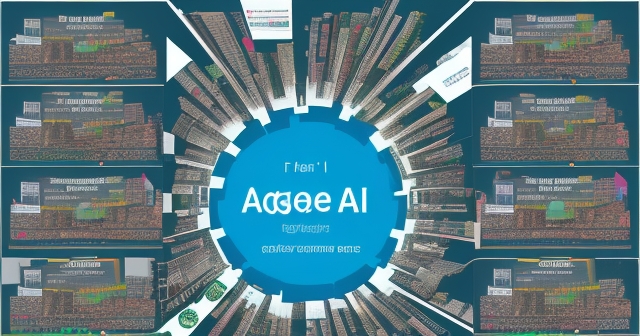
- Aggregators serve as digital interfaces that streamline processes across various sectors.
- They provide a centralized access point for information, improving user experience.
- Investors benefit from understanding how aggregators can shape market dynamics.
eCommerce Business Aggregators: Amassing Digital Empires Through Acquisition
One of the most prominent and financially significant types of aggregators in recent years operates within the booming world of eCommerce, particularly targeting businesses built on platforms like Amazon FBA (Fulfillment by Amazon). These are not just platforms aggregating products; they are companies aggregating entire businesses. They identify successful online brands, often small-to-medium-sized sellers on Amazon or other marketplaces like Shopee or Shein, and acquire them. Companies like Thrasio, Opontia, and Gravitiq have become household names in this niche, backed by substantial venture capital and private equity funding.
Why would a company want to buy dozens or even hundreds of small online retailers? The strategy is rooted in **scale and synergy**. Individually, an Amazon FBA seller might hit a growth ceiling due to limitations in capital, operational expertise, marketing capabilities, or supply chain management. An eCommerce aggregator, on the other hand, possesses sophisticated infrastructure, access to significant funding, professional marketing teams, and advanced logistics networks. By acquiring multiple successful brands and integrating them onto a single, powerful operational platform, the aggregator can optimize supply chains, negotiate better terms with suppliers and platforms like Amazon, cross-sell products, and implement advanced marketing strategies that were previously out of reach for the original seller. This aggregation allows for rapid scaling and aims to unlock greater profitability than the sum of the individual businesses.
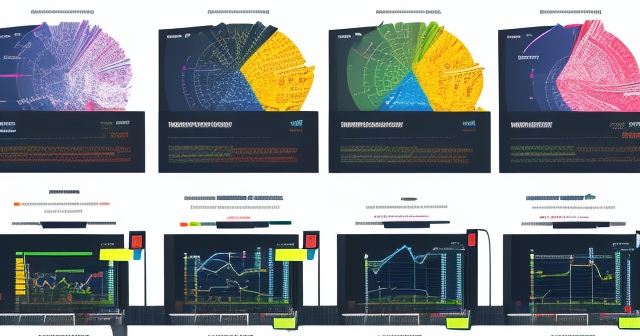
The financial implications of this trend are enormous. We’ve seen reports indicating that eCommerce aggregators, particularly those focused on Amazon FBA businesses, collectively raised billions in investment in a relatively short period—figures exceeding $12 to $13 billion have been cited. This influx of capital highlights strong investor confidence in the viability of this business model. For investors, this creates new avenues for participation, either through investing directly in these aggregator companies (if public) or understanding the broader market dynamics they influence, such as the valuation of online retail businesses, trends in consumer brands, and the health of the Amazon marketplace ecosystem. It also signals a maturation of the direct-to-consumer (DTC) and marketplace-based retail sectors, making successful online businesses attractive acquisition targets.
However, like any rapidly growing market, the FBA aggregation space comes with its complexities and risks. Valuations can be high, leading to discussions about a potential “bubble.” Due diligence is critical; aggregators must meticulously examine everything from sales history and customer reviews to supply chain reliability and, importantly, intellectual property (IP). Ensuring the acquired brands have solid IP protection is paramount. Furthermore, external factors like changes in platform policies (such as Amazon FBA fee structures, as recently seen with fee hikes) or new regulations (like EPR compliance in certain regions) can significantly impact the profitability and operations of these aggregated businesses. Understanding these nuances provides traders with a deeper insight into the factors affecting valuations and the overall health of companies operating in or interacting with this space.
Payment Aggregators: Streamlining Transactions in the Digital Retail Landscape
Beyond the acquisition of businesses, the term “aggregator” also applies crucially to the world of digital payments. Payment aggregators are platforms that facilitate online transactions for businesses by pooling multiple payment methods under a single umbrella account. Instead of a merchant needing to establish separate relationships with banks, credit card networks (like Visa, Mastercard), and other payment processors for each type of card or digital wallet, the payment aggregator handles these connections. They aggregate the transactions from various sources and route them through their own merchant account, simplifying the process for the end business owner.
In the context of retail, especially online retail and eCommerce, payment aggregators are indispensable. They make it significantly easier for businesses, particularly small and medium-sized enterprises (SMEs), to accept a wide range of digital payments without the technical complexity and administrative burden of direct integrations. This convenience fuels eCommerce growth by enabling seamless checkout experiences for customers using their preferred payment methods. Have you ever noticed how many different ways you can pay on a single online store? Often, a payment aggregator is working behind the scenes to make that possible.
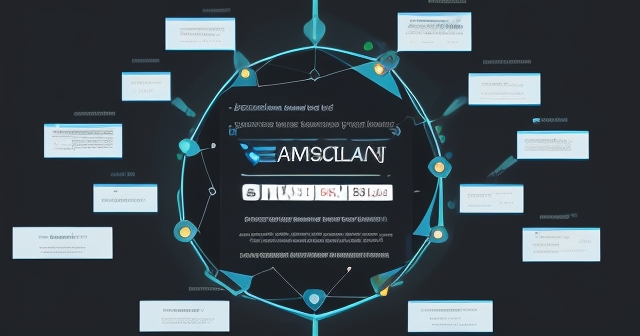
Financial data underscores the growing importance of payment aggregators. Looking at specific market data, such as card payment ecosystems, reveals their impact. For instance, a report focusing on Mexico’s card payment ecosystem as of April 2025 highlights “Aggregators” as a distinct and rapidly growing transaction category. The data shows robust year-on-year growth in both transaction value and volume for payments processed via aggregators. Total credit card spending in Mexico reached 212.3 billion MXN (Value) and 258.5 million (Volume), with debit cards seeing even higher figures at 288.9 billion MXN (Value) and 645.9 million (Volume). Within this context, aggregator transactions demonstrated significant growth: a 25.4% increase in value for credit cards and a 22.5% increase in value for debit cards year-on-year.
This growth rate for aggregators outpaced the overall growth in total card spending (credit +18.0% Value, debit +14.3% Value), indicating that aggregators are not just benefiting from market expansion but are also capturing a larger share of the market. The data shows a positive shift in aggregator’s share, increasing by 0.12 percentage points for debit card transactions. This trend suggests that consumers are increasingly using cards, particularly debit cards, through platforms and services facilitated by aggregators. This aligns with broader shifts in consumer preferences towards digital services, entertainment, and travel, all sectors where payment aggregators play a vital role in enabling transactions. For traders, this kind of data provides valuable insights into consumer behavior trends, the health of the digital economy, and the performance of companies involved in payment processing and FinTech. Monitoring these trends can inform investment decisions in related sectors.
Information Aggregators: Powering Investment Decisions with Curated Data
While eCommerce business and payment aggregators deal with tangible commercial activities, perhaps the most familiar type of aggregator, especially for anyone involved in finance, is the information aggregator. This category includes news aggregators and, specifically, investment news aggregators. Their purpose is to collect information, news articles, financial reports, social media mentions, and other relevant data from a vast number of sources and present it to the user in a structured, searchable, and often personalized format.
Think of platforms like Yahoo Finance, Google Finance, Seeking Alpha, or dedicated tools like Feedly and LevelFields. These platforms don’t generate the news themselves; they pull it from countless news outlets, company filings, press releases, expert blogs, and social media feeds. For an investor or trader, wading through the sheer volume of financial information available online every day is practically impossible. Information aggregators solve this problem by bringing relevant data to you. They use algorithms, often powered by **Artificial Intelligence (AI)**, to scan millions of data points, identify key events, filter out noise, and highlight information relevant to specific stocks, sectors, or topics you are following.

The use of AI in investment news aggregation is a game-changer. Platforms like LevelFields leverage AI for advanced event analysis, turning unstructured news text into actionable insights. They can identify relationships between companies and global events, provide real-time alerts on critical developments, and even summarize complex information, saving traders precious time. Feedly uses AI for market intelligence, helping users track trends, competitor news, and threat intelligence relevant to their interests or investments. This technology allows for customization, enabling users to create personalized feeds focused only on the assets or markets they care about. This level of focused information is invaluable for conducting fundamental analysis, staying abreast of breaking news that could impact stock prices, and identifying potential trading opportunities before they become widely known.
Access to streamlined, high-quality financial information is a cornerstone of informed trading. Whether you rely primarily on technical analysis, fundamental analysis, or a blend of both, understanding the underlying market sentiment, company news, economic indicators, and sector-specific developments is crucial. Information aggregators provide the efficient means to acquire this understanding. By consolidating diverse perspectives and data points, they help build a comprehensive picture of the market. Furthermore, aggregation technology isn’t limited to external news; retail websites themselves often use social media aggregators (like Taggbox widgets) to display user-generated content (UGC), reviews, and social feeds, enhancing user engagement and adding credibility – insights potentially useful for those analyzing consumer-facing companies.
For those navigating the complex landscape of global markets and considering diversifying their trading strategies, having reliable access to information is key. If you’re looking to trade a wide range of financial instruments, including various currency pairs, commodities, indices, and stocks, you need a platform that supports this breadth of assets and provides robust tools for analysis. Gathering insights from aggregators about global economic trends, specific company news, or sector performance can directly inform your trading decisions across these different markets. If you’re considering delving into markets like Forex, where currency pairs react swiftly to global news and economic data, having a platform that offers competitive conditions and reliable execution is paramount.

If you’re considering expanding your trading activities into the Forex market or exploring a wider variety of CFD instruments, then **Moneta Markets** is a platform worth considering. It is an Australian-based broker offering access to over 1000 financial instruments, catering to both novice and experienced traders looking for diverse opportunities informed by aggregated market intelligence.
The Technology Behind the Aggregation: AI and Algorithms at Work
The functionality of these diverse aggregators is underpinned by sophisticated technology, primarily involving algorithms and artificial intelligence (AI). At its core, aggregation relies on algorithms designed to scan, index, categorize, and prioritize content or transactions from numerous sources. For information aggregators, these algorithms constantly crawl the web, ingest RSS feeds, process data from APIs (Application Programming Interfaces) provided by social media platforms or financial data providers, and analyze structured and unstructured text.
The role of AI is becoming increasingly significant, moving beyond simple collection and sorting. AI algorithms can perform advanced tasks such as:
- Natural Language Processing (NLP): Understanding the context and sentiment of news articles or social media posts.
- Event Detection: Identifying significant corporate events (earnings calls, leadership changes), regulatory actions, or global news that could impact markets.
- Relationship Mapping: Connecting seemingly disparate pieces of information, such as linking a supplier’s issue to a specific retail company’s potential stock price impact.
- Personalization: Learning user preferences to deliver highly customized content feeds and alerts.
- Summarization: Providing concise summaries of lengthy reports or multiple news articles on the same topic.
- Pattern Recognition: Identifying subtle patterns in data that might signal emerging trends or risks.
For eCommerce aggregators, AI can be used for analyzing vast amounts of sales data, predicting inventory needs, optimizing pricing, and identifying potential acquisition targets based on performance metrics. In payment aggregation, algorithms ensure secure routing of transactions, fraud detection, and reconciliation across different payment methods and banks.
This technological foundation allows aggregators to process information and transactions at speed and scale that would be impossible manually. For traders, this means access to real-time updates and synthesized insights, enabling faster reaction to market-moving news. The ability of AI-driven platforms to cut through the noise and highlight actionable information is a significant advantage in today’s fast-paced trading environment. It allows you to spend less time searching for information and more time analyzing its implications and executing your trading strategies. Do you find yourself overwhelmed by the sheer volume of financial news? Leveraging an effective information aggregator could be a key part of your market analysis toolkit.
Market Trends and Investment Insights Driven by Aggregators
Let’s tie together how the activities of these different types of aggregators create discernible market trends and offer specific investment insights. The rise of eCommerce business aggregators, for example, has created a vibrant M&A market for online retail brands. This trend signals the maturity and value being placed on successful digital-native businesses. Investors are pouring billions into this space, anticipating significant returns as these aggregated portfolios of brands are scaled and optimized. This activity impacts the valuation multiples seen for online businesses and highlights the importance of digital brand building and direct customer relationships. For traders interested in the tech and consumer discretionary sectors, understanding which types of online businesses are being acquired and why can provide insights into emerging consumer trends and the competitive landscape.
The growth of payment aggregators, as seen in the Mexico data, reflects a broader global trend towards digital payments and eCommerce. The strong double-digit growth in aggregator transaction value and volume, and their increasing share of card payments, indicate a fundamental shift in consumer behavior. People are becoming more comfortable and reliant on digital channels for a wider range of purchases, including non-essential goods and services. This trend is positive for FinTech companies providing payment processing solutions and for retail businesses that successfully transition to or expand their online presence. Analyzing payment data, potentially available through various financial reports and aggregated sources, can offer traders signals about economic health and consumer spending patterns, which are critical inputs for macroeconomic analysis and sector-specific trading.
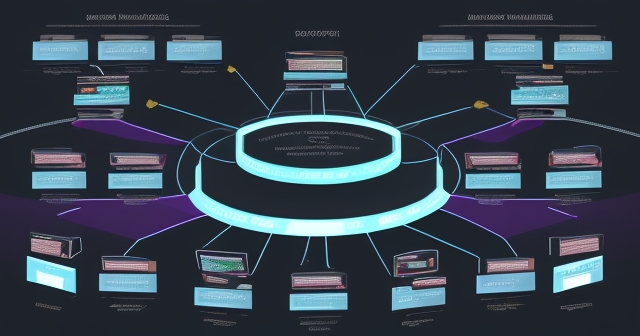
Furthermore, the sophistication of investment news aggregators, powered by AI, is influencing how market information is consumed and acted upon. The ability to quickly identify relevant news and insights from vast datasets means that market reactions to information might become faster and more efficient. This reinforces the importance of having access to real-time, aggregated data for active traders. It also highlights the competitive advantage gained by those who can effectively utilize these tools to filter signal from noise and identify alpha-generating opportunities. Whether you are tracking earnings calls, regulatory announcements, or industry reports, an effective aggregator ensures you don’t miss critical information that could impact your portfolio.
Considering the need for reliable platforms to act on these insights, especially when navigating diverse global markets, the choice of a brokerage is crucial. Insights gained from market aggregators about global economic shifts or specific asset performance need to be translated into actionable trades efficiently and securely. When you’re exploring various asset classes, from major currency pairs to emerging market stocks or commodities, having access to a platform that supports advanced charting tools for technical analysis alongside real-time news feeds sourced through aggregation can provide a comprehensive trading environment.
When selecting a trading platform, the flexibility and technological advantages of **Moneta Markets** are worth noting. It supports popular platforms like **MT4, MT5, and Pro Trader**, combining high-speed execution with competitive low spreads to offer a favourable trading experience across the many instruments informed by aggregated market insights.
Challenges and Opportunities for Businesses and Investors
While aggregators offer significant benefits, they also present challenges and unique opportunities for various stakeholders. For businesses, particularly smaller ones, the rise of eCommerce aggregators creates both an exit opportunity (selling their successful brand) and a competitive threat (competing against larger, better-funded aggregated entities). Understanding the valuation metrics used by aggregators and the factors that make a business attractive for acquisition (consistent revenue, strong brand, clean financials, defensible IP) is vital for potential sellers.
For businesses relying on payment aggregators, the challenge lies in choosing a reliable provider with competitive fees, robust security, and seamless integration. While aggregators simplify payment processing, businesses still need to be aware of transaction costs, settlement times, and potential issues with chargebacks or fraud. The opportunity, however, is the ability to instantly offer a wide array of payment options to customers, boosting conversion rates and expanding market reach, particularly in regions like Latin America where digital payment adoption is accelerating, as seen in the Mexico data.
For investors and traders, the primary challenge with information aggregators can still be information overload, even with AI filtering. It requires developing the skill to synthesize information from multiple sources, evaluate the credibility of different news outlets, and understand how conflicting data points might influence market sentiment. The opportunity, conversely, is unparalleled access to diverse perspectives and real-time data that was previously only available to institutional investors. By effectively using these tools, individual traders can level the playing field, gaining insights into global events, sector-specific trends, and company performance that can inform well-reasoned trading decisions.
Furthermore, the market itself is influenced by these aggregation trends. Companies that are successful eCommerce aggregators might become attractive investment opportunities. Similarly, FinTech companies specializing in payment aggregation are key players in the digital transformation of retail. Tracking the performance, funding rounds, and strategic moves of these entities can provide direct investment ideas. Moreover, by analyzing the aggregated transaction data (where available), investors can gain a pulse on consumer spending and economic activity, complementing traditional economic indicators.
The Future Landscape: Greater Integration and AI Dominance
What does the future hold for aggregators and their impact on finance and retail? We can anticipate even greater integration and sophistication. Information aggregators will likely become more predictive, using AI to not only identify current events but also forecast potential market reactions based on historical data and sentiment analysis. They may integrate even more data sources, including satellite imagery, alternative data streams, and real-time supply chain information, to provide an even richer picture of market dynamics.
In the eCommerce aggregation space, we might see consolidation among the aggregators themselves, or perhaps a shift towards specializing in specific niches or geographies. The model is likely to evolve as they mature, potentially moving beyond marketplaces like Amazon to acquire direct-to-consumer brands built on other platforms. The challenges related to valuation and operational efficiency will remain key factors determining success.
Payment aggregators will continue to expand their reach and the types of payment methods they support, including cryptocurrencies and other emerging digital assets. They will also likely enhance their services with advanced analytics, fraud prevention, and financing options for the businesses they serve. Regulatory environments will play a significant role in shaping their development, particularly concerning data privacy and security.
For traders and investors, this future means access to even more powerful tools for market analysis. The ability to process vast quantities of information and identify actionable insights will become even more refined. However, it also means the market itself might react faster to information, requiring traders to be agile and equipped with platforms that can handle rapid execution across diverse markets. Staying informed about the evolution of these aggregation technologies and understanding how to effectively utilize them will be crucial for maintaining a competitive edge.
Choosing Your Platform: Accessing Markets Informed by Aggregation
Understanding the insights provided by various aggregators—whether they highlight trends in eCommerce M&A, shifts in digital payment adoption, or breaking news impacting specific stocks—is only one part of the equation. The other crucial part is having the right tools and platform to act on those insights in the financial markets. A comprehensive view of the market, gained through aggregated information, should ideally inform your trading strategy, whether you are focused on short-term technical analysis, long-term fundamental investing, or a mix.
When selecting a broker, you need a platform that offers access to the specific instruments you are interested in trading, based on the opportunities identified through aggregation. For instance, if news aggregators highlight volatility in energy markets, you might look for a platform that offers crude oil or natural gas CFDs with competitive spreads. If payment data points to strong growth in FinTech, you might consider trading related technology stocks or indices. The insights derived from aggregators should guide your exploration of potential trading opportunities across different asset classes.
Beyond the range of instruments, the platform’s capabilities for analysis and execution are paramount. Does it offer advanced charting tools for technical analysis? Can you integrate or easily access relevant news feeds and fundamental data? Is the order execution speed reliable, especially in volatile market conditions often triggered by the kind of news filtered by aggregators? These are critical questions for any trader.
If you are seeking a broker that is both regulated and provides global trading capabilities, **Moneta Markets** holds multi-jurisdictional regulatory licenses, including from FSCA, ASIC, and FSA. They offer segregated client funds for security, provide features like free VPS for automated strategies, and offer 24/7 support, making them a potential choice for traders looking for a comprehensive and secure trading environment informed by insights gained from aggregating market data.
Adapting Your Strategy with Aggregator Insights
How can you practically integrate the understanding of aggregators into your trading strategy? First, identify the types of aggregators most relevant to your trading style and the markets you follow. If you trade individual stocks, an investment news aggregator with strong AI capabilities for event detection and summarization is invaluable. If you are interested in macro trends or trading currency pairs, focus on aggregators that provide comprehensive economic news and analysis from global sources.
Second, use the data and insights provided by aggregators to complement your existing analysis methods. If you primarily use technical analysis, aggregated news and data can help you identify potential catalysts for price movements or confirm trends observed on charts. For example, strong earnings data (aggregated from reports) might reinforce an upward technical trend, while unexpected negative news (flagged by an aggregator) could signal a potential trend reversal.
Third, consider the business models discussed. The activities of eCommerce aggregators acquiring FBA businesses, while not directly tradable for most, illustrate capital flows and investor sentiment towards the online retail sector. The growth of payment aggregators highlights digital adoption trends and the potential of FinTech companies. Understanding these dynamics provides context for trading decisions related to stocks in the retail, technology, and financial sectors.
Finally, regularly evaluate and refine the information sources you use. The world of digital information is constantly changing. Ensure your chosen aggregators are providing timely, relevant, and credible information. By consciously leveraging the power of aggregation, you can enhance your market awareness, make more informed decisions, and potentially improve your trading outcomes.
Conclusion: Aggregators as Essential Pillars of the Modern Financial Ecosystem
Aggregators, in their various forms – from curating news and financial data to consolidating eCommerce businesses and streamlining digital payments – have become essential pillars of the modern financial and retail ecosystem. They address the fundamental challenge of information overload and complexity in a hyper-connected world, providing structure, efficiency, and actionable insights.
For businesses, they represent new models for growth, market access, and operational efficiency. For consumers, they simplify choices and facilitate seamless digital interactions. And critically, for investors and traders, they offer powerful tools to navigate complex markets. The substantial investment flowing into eCommerce aggregators, the accelerating growth of payment aggregators in digital commerce, and the increasing sophistication of AI-driven information platforms all underscore their growing influence.
As you continue your journey in the financial markets, whether refining your trading strategies or exploring new investment opportunities, understanding and utilizing the capabilities of aggregators will be increasingly vital. They empower you to access and process information more effectively, understand underlying market dynamics, and make decisions based on a more comprehensive view of the financial landscape. By embracing these tools and staying informed about their evolution, you position yourself for greater success in the dynamic world of trading and investment.
| Type of Aggregator | Description | Examples |
|---|---|---|
| eCommerce Aggregators | Collect and manage multiple online retail businesses. | Thrasio, Gravitiq |
| Payment Aggregators | Facilitate transactions by consolidating various payment methods. | Stripe, PayPal |
| Information Aggregators | Gather and present financial and market data from numerous sources. | Yahoo Finance, Feedly |
retail aggregatorFAQ
Q:What are aggregators in the context of eCommerce?
A:Aggregators in eCommerce refer to companies that consolidate multiple online retail businesses into a single operational entity to optimize growth and profitability.
Q:How do payment aggregators streamline transactions?
A:Payment aggregators simplify the payment process for businesses by enabling them to accept various payment methods under one account, reducing the complexity of managing multiple relationships with banks and payment processors.
Q:What role do information aggregators play in trading?
A:Information aggregators collect and filter news, financial reports, and market data to provide traders with timely, relevant insights that help inform their trading decisions.
